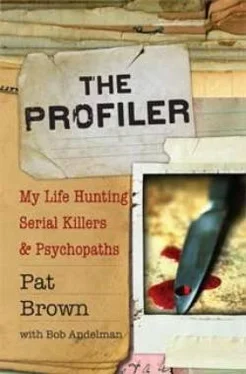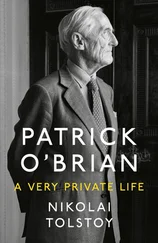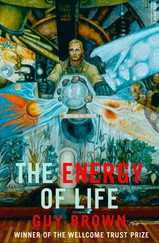When Sam finished his work shift around 6 p.m., he drove home expecting they’d do what they always did on Fridays-drive over to the property where their house was under construction and then spend the weekend doing whatever needed doing. Oddly, Mary Beth’s car was not parked in the driveway out front. As he unlocked the front door of their condo, Sam noticed that only the bottom lock was locked; the top, a dead bolt, was not. He walked into the condo and noticed that Mary Beth’s purse and tote bag were not there, but that made sense because she was out with the car.
I guess she’ll be coming back soon, because we have plans for tonight, he thought.
He also noticed that the condo had been freshly vacuumed, which was a little odd because that was a task usually done over the weekend.
But she didn’t come back, didn’t call, and Sam soon grew wary. Where is she? What’s going on?
He called friends, including Mary Beth’s son, Art, around 9 p.m., but no one knew where Mary Beth was, and he wasn’t getting anywhere. He called several hospitals in town, thinking maybe there had been an accident, and asked each if she was there. She wasn’t. He called a friend who was battling cancer, but Mary Beth hadn’t been over to visit her.
This wasn’t like Mary Beth, and he grew anxious, a mixture of anger and dread. Why doesn’t she come home? Meanwhile, he washed some clothes to pass time between 9 and 10 p.m. in the building’s downstairs laundry room and chatted with neighbors.
When Sam returned to the condo, Mary Beth still wasn’t there. He lay down in bed and dozed off. When he woke up, it was 1:30 a.m. He looked over at the bedroom closet, and for the first time since coming home from work, noticed that the door was closed. Mary Beth almost always kept it open, except when she vacuumed.
Sam got up and looked in the closet. There was Mary Beth, scrunched up in a fetal position, facedown on the floor of the closet, dead.
She was wearing a blouse and slip; her hair was combed as if she had just come out of the shower, which was consistent with her routine after a swim. There was no blood. Sam touched her once on the cheek and she was cold. He left the room and called 911. The police came out and took him in for several hours of questioning. He told them what happened, that he found her in the closet, and they said they didn’t believe him. They asked him what really happened and he told them the same story again. They told him Mary Beth had been killed in the evening, after 6 p.m., after Sam arrived home. Nothing made sense to Sam-that his fiancée was dead and the police said he killed her. He told them again he didn’t. They said he did. Then they told him to go to a hotel for the time being and they would contact him.
The police told reporters that Mary Beth Townsend’s death was suspicious, but it took six months before it would officially be ruled a homicide. According to the local paper, they “insinuated” to reporters that Mary Beth was killed by someone she knew, so the public had no reason to fear that a serial killer was on the loose. The condominium unit was sealed for the next three weeks.
Meanwhile, Sam Bilodeau waited in limbo. On that Saturday, after he had been interrogated by the police and checked into a hotel, he called Art but couldn’t get hold of him. Unable to just sit alone and do nothing, Sam decided to visit Mary Beth’s father-his almost-father-in-law. When he was driving back, he saw Mary Beth’s car, a light blue hatchback, off the side of the highway in a distressed part of Washington, D.C. The police had been looking for the car, but he was the one who found it. That made the police even more suspicious of him.
Sam called the police, who arrived on the scene with a dog that sniffed Mary Beth’s car and then pulled its handler toward the woods. The police brought Sam in for more questioning and leaned on him, hard.
“We know what happened,” the detective said. “You came home from work. You had an argument with Mary Beth, you pushed her, she hit her head, and she died. You panicked and put her in the closet, and you drove her car down to an area of town where you thought criminals came from, dumped the car there, and took the train back.”
Sam shook his head and said, “No, that’s not what happened. I didn’t do this.”
“She died after six p.m, sometime after six p.m. Weren’t you home after six at night?”
“That’s when I came home. If it happened after that, yes, I was there the whole time. There could be nobody else, because I was there.”
This went on for hours.
The police said they had a new technique to bring up prints. They told him his prints were all over Mary Beth, that she was alive at six p.m., and that there was an indentation on the back of her neck that matched an indentation of his palm. They said they believed that Sam accidentally knocked her off balance and then she hit her head as she fell. Sam said he gave Mary Beth a massage that morning and that that could account for his fingerprints. (The police lied about Sam leaving fingerprints on Mary Beth’s body; such misrepresentation is accepted as standard practice and is legal in interrogation techniques. Still, Sam’s lawyer later told me there could be no prints and that in twenty-five years as an attorney he had never heard such a ridiculous police claim. The method for pulling fingerprints from bodies does exist now, but is not often successful, especially if the body isn’t found within a couple of hours.)
The police asked Sam for a blood sample and he gave it voluntarily. They also took his shoes; he left the station in socks. (The police still have his shoes.) A polygraph test was administered to Sam-with his assent. From the police officers’ expressions, he assumed he passed. But they went right back to telling him that he did it.
Sam eventually confessed to doing what the police said he did.
He said he didn’t know how it could have happened and that he had no memory of killing Mary Beth, but that he must have panicked, hid Mary Beth’s body, and tried to stage the crime to look like a burglary by driving the car to the other side of town.
Everything he said was based on what the police told him, not his own memories. He was a trusting person, he was confused, he was exhausted and grieving, and he thought the police wouldn’t lie. He finally gave in. He signed a confession-and then the police let Mary Beth’s alleged killer go, in his stocking feet.
On Sunday, the police brought Sam in for a couple more hours of questioning, but nothing new was brought up. By Monday morning, the medical examiner’s report came in stating that Mary Beth had been strangled and that the police now had a confession that didn’t match the evidence. They never called Sam-or his lawyer-again.
SAM BILODEAU MIGHT not have heard from the police again but he remained their number one suspect. In spite of the detectives’ dogged belief that Sam was guilty as hell, they had no evidence with which to charge him. Worse, the more they investigated the circumstances of the crime, the less the evidence supported their theory.
The police couldn’t charge Sam based on his “confession”-or anything else.
When Sam found himself in the interview room after Mary Beth’s murder, there was no time of death yet determined by the medical examiner. All the police knew was that when Mary Beth was found, she was cold and stiff; she had been dead for hours, but how many, they didn’t know. (They told Sam she was killed after six p.m., after he came home from work, but that was just to force him into confessing.) Sam could have killed her after he came home from work and waited a good long time to report her murder. So, Mary Beth being cold and in a good amount of rigor mortis didn’t rule Sam out. The autopsy is still sealed, so we don’t know what the medical examiner ruled as the time of death, but sometimes circumstantial evidence packs a wallop.
Читать дальше












